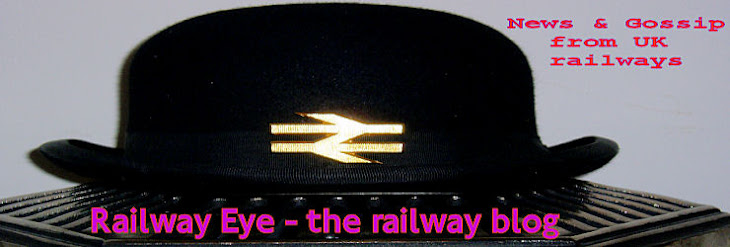Some disturbing figures have emerged from the British Transport Police.
Released following an FOI request they reveal worryingly high incidents of 'Passengers Under Train' and 'Passengers Hit by Train' recorded in the period between 1st January 2012 and 2nd April 2012.
In this three month period 147 PUT and PHT incidents were recorded across both the London Underground and National Rail networks.
It goes without saying that each of these numbers represents a human tragedy, not just for the person directly involved, their friends and family but also for the drivers and other rail staff caught up both in the event and its aftermath.
Released following an FOI request they reveal worryingly high incidents of 'Passengers Under Train' and 'Passengers Hit by Train' recorded in the period between 1st January 2012 and 2nd April 2012.
In this three month period 147 PUT and PHT incidents were recorded across both the London Underground and National Rail networks.
It goes without saying that each of these numbers represents a human tragedy, not just for the person directly involved, their friends and family but also for the drivers and other rail staff caught up both in the event and its aftermath.
And there are of course no easy answers to this problem. Network Rail and
TOCs are to be congratulated for working closely with the Samaritans to try and make a difference, where possible, to these figures.
Shocking as these numbers are, without comparative figures for other years, it is difficult to know whether this reflects an upward, downward or static trend.
Certainly the emergence of social media means that these desperately sad events resonate far beyond the line or route where they take place. Users of twitter for instance become aware of events in real time that are taking place many miles away, where as in previous, less connected times, they might have remained blissfully unaware.
This produces a challenge for the industry and for all those in the industry on twitter.
Do we need to be careful about drawing attention to certain events or causes of delay (and I am aware of the irony of that statement) less we create a climate of fear or God forbid encourage repetition. After all broadcast media has to exercise extreme caution when handling suicides in drama as the risk of the Copycat Effect is increasingly understood (except it would appear by Jeremy Clarkson).
This produces a challenge for the industry and for all those in the industry on twitter.
Do we need to be careful about drawing attention to certain events or causes of delay (and I am aware of the irony of that statement) less we create a climate of fear or God forbid encourage repetition. After all broadcast media has to exercise extreme caution when handling suicides in drama as the risk of the Copycat Effect is increasingly understood (except it would appear by Jeremy Clarkson).
Or do we now live in a world of almost total transparency where the challenge is to collectively devise new means of communicating the consequences for all concerned of these devastating events?
Again there are no easy answers but perhaps these questions need asking?
UPDATE: This from Network Rail...
The Samaritans' guidelines to the media on the reporting of suicides can be found here.
UPDATE: This from Chionanthus VIrginicus...
RSSB report for 2010/11 here
Fatalities summarised as:
- 27 trespass
- 4 at crossings
- 208 suicides
Note - Not in the same format and only covers National Rail.







